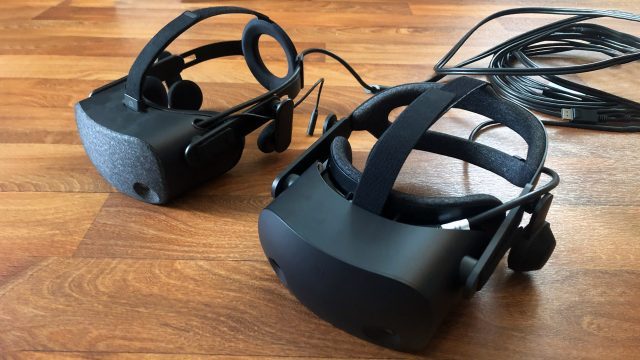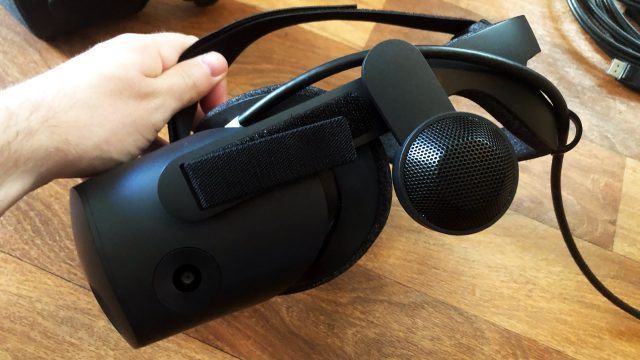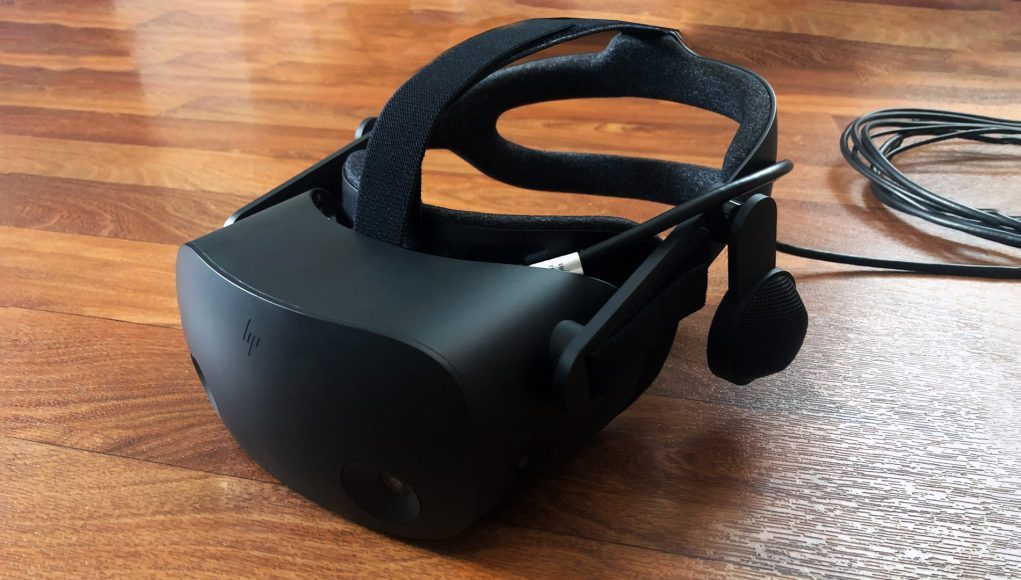Today HP revealed its next-gen WMR headset, Reverb G2. While the original Reverb beat out the competition in resolution, some aspects of its display held it back from really capitalizing on all those pixels. Reverb G2 brings with it brand new displays and lenses which offer outstanding clarity.
‘Clarity’ is a subjective term which I use to try to boil down how sharp and clear the virtual world looks through a VR headset. There’s all kinds of things that contribute or detract from clarity. Resolution is surely important, but so are things like screen-door effect, mura, persistence, color smearing, and plenty more contributed by the lenses. ‘Clarity’ is the ultimate result of all of these factors.
When aiming for optimal clarity in a VR headset, any one of the aforementioned elements could be the bottleneck, so matching all these factors is key.
The original Reverb clearly still has the best resolution of any major consumer headset thanks to its 2,160 × 2,160 per-eye displays. And, arguably, it has the greatest clarity too. And yet Reverb G2, despite having the exact same resolution, has notably better clarity compared to Reverb G1.
But how do headsets with the same resolution, same display size, and same field of view offer different clarity? Even though the common paper specs are the same, the lenses and displays are different.

Road to VR got an exclusive hands-on with a first-run prototype of the Reverb G2. I’m fortunate enough to get early glimpses of hardware like this regularly; given that things can still change, I often withhold firm judgements until seeing how the final product shapes up. Even at this stage—where some things are still in flux—I’m confident in calling it Reverb G2 the king of clarity.
Recapping Reverb G1
The G1 has a high pixel density, giving it more resolving power than any other headset in its class. But the display and lenses had some issues that were ultimately holding clarity back.
Notably, the G1 displays had a perceived mura effect; this is similar in appearance but wholly different in origin than the more commonly known screen-door effect (AKA SDE). Mura looks a bit like a faint, fine mesh covering the lenses, or like the display is a bit cloudy. On a phone or TV display, mura isn’t much of a concern because the display doesn’t move with your head. In a VR headset, mura—just like SDE—is more noticeable because it moves over the virtual world as you move your head.
In addition to the mura on G1, the headset also had some surprising red smearing. This can only be seen when moving your head, but the effect causes any red colors in the image drag or ‘ghost’ slightly behind the other colors. This is exacerbated when the red is against certain colors and with fast head movement.
And finally, Reverb G1 had a bit more chromatic aberration (slight color separation toward the edges of the lens) than I would have expected. This wasn’t a major factor in clarity, but most headsets exhibit very little chromatic aberration, and, as you can imagine, the better aligned the light is coming through the headset, the sharper the image will appear.
I’m not bashing the G1 here. It’s a solid headset that’s lead the way in resolution and pixels per degree in the latest wave of consumer VR headsets. But it felt like it had some untapped potential in clarity because of these display and lens bottlenecks.
Unlocked Potential
Reverb G2 unlocks that potential by largely clearing up these issues with new displays and new lenses.
The perceived mura has been nearly eliminated, which alone makes a big difference. G1 was the first consumer headset to effectively eliminate the screen-door effect thanks to its pixel density, but you couldn’t be blamed for not noticing because mura took its place to a degree. With the mura gone on G2, the headset is getting a more ‘quality’ out of its pixels.
(Even though SDE is effectively gone, that’s not to say that G2 has “retina resolution;” you’ll still be able to see aliasing at this resolution. Eliminating SDE is different than achieving pixel density which meets the resolving power of the human eye. Maybe for G3—what do you say, HP?)
So, mura goes down and clarity goes up. This is good. But what about the other stuff? As far as I’ve been able to see, G2 has also eliminated the red-smear which is another nice win over the G1. Some chromatic aberration is still there, though HP tells me that the prototype I was testing hasn’t had a final calibration pass, and it expects this will bring further improvements to chromatic aberration, and possibly some other aspects.

HP also tells me that the redesigned G2 lenses (yes, they’re fresnel) have improved resolving power compared to the G1, which further enhances clarity. You can think of this a bit like ‘sharpening’ the pixels that you’re seeing through the lens.
Like the original Reverb, the displays in G2 are 90Hz LCD. Though HP says they have improved contrast and brightness. That improved brightness has also allowed them to lower the persistence of the display (the amount of time the display stays lit during each refresh). Reducing persistence means the image will look sharper during head movement.
Another win for G2 is a physical IPD adjustment which ranges from 60mm to 68mm, which means that a broader range of people will be able to move the lenses into the ideal position to get the most from the G2’s impressive visuals.
Boiling all of this down, Reverb G2 is the king of clarity, and I feel confident that this will be the headset’s defining factor.
When I fired up Half-Life: Alyx, coming from Index, the G2 nearly felt like looking at the game with new eyes. I was drawn to details that never caught my attention before, like scratches in the shotgun’s metal, letters printed on the side of the pistol, and innocuous stickers covering a gutter pipe. I also quickly noticed that many of the game’s textures don’t quite hold up to G2’s resolution (too soon!).
When I pulled up Bigscreen to see what it was like to use my PC desktop through the headset, it was the first time I didn’t quickly feel bothered by the resolution. The remaining bottleneck for doing typical PC productivity work in VR without compromise is now more in the realm of, field of view, sweet spot, and comfort.
– – — – –
And that’s really just the visuals of the headset. Beyond that, G2 brings a sweeping list of improvements over G1 and other WMR headsets, like better tracking, controllers, ergonomics, audio, and more, all of which we detailed in our Reverb G2 announcement article. HP also announced that the G2 is available for pre-order starting today priced at $600, with an expected release date in the Fall.

Clearly there was a lot to talk about with the G2’s visuals, so I’ll save some thoughts on other parts of the headset for a future article. I will say now, however, that I haven’t yet been able to try the new controllers. Beyond that, let me know what else you’d like to know about the headset in the comments below.







